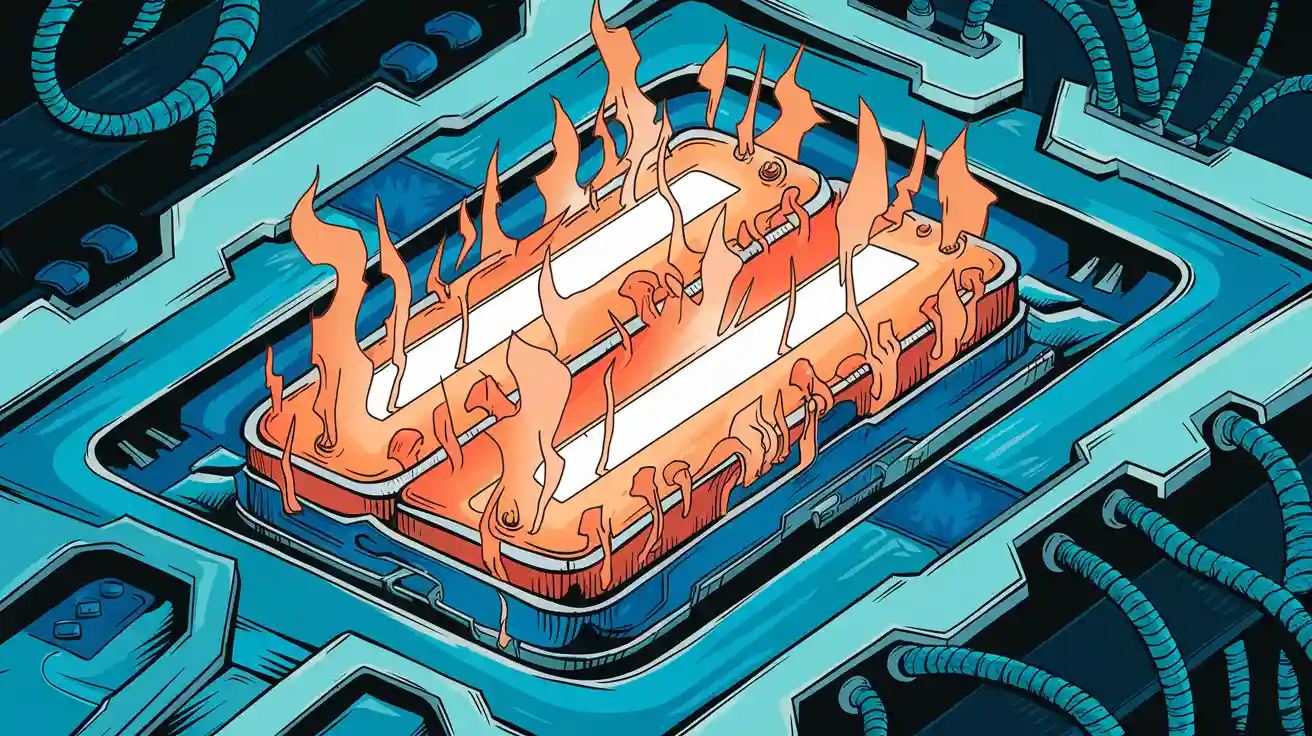
Extreme heat can compromise lithium batteries, leading to catastrophic thermal runaway events. Since 2006, over 583 verified lithium battery incidents have been reported, with 73 occurring in 2024 alone. A breakthrough in the high-temperature resistance of lithium batteries now offers transformative potential. Innovations, like high-heat transfer batteries with heat removal rates 20 times higher than conventional ones, help industries like electric vehicles and renewable energy combat heat-related battery issues. These advancements ensure safer, more reliable battery technology and keep your lithium batteries cool under stress.
Key Takeaways
Very high heat can make lithium batteries overheat, creating dangers. Knowing this risk is important for using batteries safely.
New ideas like solid materials and strong safety layers make batteries safer. They lower the chance of fires and stop overheating problems.
Using better cooling systems and smart battery controls keeps batteries cool. This makes them last longer and work better.
Part 1: Challenges in Lithium Battery Safety and Efficiency
1.1 Understanding Thermal Runaway Risks
Thermal runaway risks represent one of the most critical safety challenges in lithium battery technology. When a battery experiences excessive heat, it can trigger a self-sustaining reaction. This reaction releases more heat, leading to catastrophic failure. You may encounter this issue in scenarios like overcharging, physical damage, or exposure to high temperatures. The chain reaction can cause fires or explosions, posing significant risks to both users and equipment. Addressing thermal safety is essential to prevent such incidents and ensure reliable battery performance.
1.2 Performance Degradation in High-Temperature Environments
High temperatures accelerate chemical reactions within lithium batteries, leading to faster degradation. You might notice reduced capacity, slower charging, or even shorter battery life. The following table highlights key performance metrics affected by elevated temperatures:
Metric | Description |
|---|---|
Capacity fade | Reduction in the battery’s ability to store energy, leading to shorter operational times. |
Increased internal resistance | Higher resistance affects power delivery efficiency, resulting in slower charging and increased heat. |
State of Health (SOH) | Indicates the battery’s overall condition relative to its original capacity, predicting lifespan. |
Voltage drop | A lower operational voltage reduces efficiency in power delivery. |
Cycle count | More charge-discharge cycles lead to performance degradation due to chemical and physical changes. |
Heat also causes secondary reactions that degrade battery components, further compounding these issues. These effects highlight the importance of improving thermal safety to maintain efficiency and longevity.
1.3 Limitations of Conventional Battery Safety Mechanisms
Traditional safety mechanisms often fall short in addressing thermal runaway risks. Many rely on passive features like pressure vents or thermal fuses, which only activate after a failure begins. These solutions do not prevent runaway but merely attempt to mitigate its effects. Additionally, conventional designs lack real-time monitoring capabilities, leaving you unaware of potential issues until it’s too late. This gap underscores the need for advanced systems that proactively manage heat and enhance battery safety.
Part 2: Innovations Driving a Breakthrough in High-Temperature Resistance

2.1 Solid-State Electrolytes for Enhanced Safety
Solid-state electrolytes represent a significant leap forward in lithium battery technology. Unlike traditional liquid electrolytes, which are prone to leakage and flammability, solid-state electrolytes eliminate these risks by using non-flammable, solid materials. This innovation enhances safety performance by reducing the likelihood of thermal runaway.
Research comparing solid-state and conventional liquid electrolytes highlights their advantages. For instance:
Advantage | Solid-State Electrolytes | Conventional Liquid Electrolytes |
|---|---|---|
Safety | Non-flammable, eliminates thermal runaway | Flammable, prone to leakage |
Energy Density | Higher due to lithium metal anode | Lower due to graphite anodes |
Durability | Excellent mechanical strength, wider temp range | Limited durability under extreme conditions |
These features make solid-state batteries ideal for high-energy-density battery applications, particularly in electric vehicles and renewable energy storage. By addressing safety concerns and improving thermal stability, solid-state electrolytes pave the way for more reliable and efficient battery systems.
2.2 Safety Reinforced Layers (SRL) to Prevent Thermal Runaway
Safety reinforced layers (SRL) are another groundbreaking innovation designed to enhance battery protection. These layers act as a barrier, interrupting current flow during overheating or voltage drops. This proactive approach significantly reduces the risk of thermal runaway.
Additionally, materials like aerogel and thermal conductive gel used in SRL have shown remarkable results in delaying thermal runaway onset:
Material Type | Delay in TR Onset (s) | Effectiveness Description |
|---|---|---|
Aerogel | 99 | Strong suppression effect, significantly delays TR onset. |
Thermal Conductive Gel | 97 | Strong suppression effect, significantly delays TR onset. |
By integrating SRL into lithium battery designs, you can achieve effective thermal safety and enhance overall safety performance.
2.3 Advanced Cooling Systems for Battery Packs
Advanced cooling systems play a critical role in maintaining battery temperature stability. Traditional air-cooling methods often fall short in high-energy-density battery applications, where heat generation is substantial. Liquid cooling systems, on the other hand, offer superior thermal safety management by efficiently dissipating heat.
Empirical data highlights the advantages of liquid cooling over other methods:
Cooling Technique | Performance Improvement | Temperature Reduction |
|---|---|---|
Nanofluids | Enhanced battery performance | Lower surface temperature |
Phase Change Materials | Improved performance in cold climates | Better thermal management |
Several electric vehicle manufacturers, including Tesla and BMW, have adopted liquid cooling systems to ensure uniform temperature control across battery cells. This approach not only enhances efficiency but also minimizes safety concerns associated with overheating.
For customized cooling solutions tailored to your specific needs, explore our custom battery solutions.
2.4 Battery Management Systems (BMS) for Real-Time Heat Monitoring
Battery management systems (BMS) are essential for real-time heat monitoring and thermal safety management. These systems use advanced models to predict and manage heat distribution within the battery pack.
Model Type | Description |
|---|---|
Heat Generation Model | Captures battery heat generation through activation, concentration, and ohmic loss. |
Heat Transfer Model | Describes how heat is distributed within the battery, crucial for thermal management. |
Reduced-Order Thermal Model | Simplifies complex thermal dynamics for efficient real-time monitoring. |
Machine Learning-Based Model | Utilizes data-driven approaches to predict thermal behavior and enhance battery management systems. |
By maintaining optimal operating temperatures, BMS extends battery lifespan and reduces the risk of thermal runaway. This makes it an indispensable component in advanced safety mechanisms for lithium batteries.
2.5 Thermal-Conducting Interlayers for Uniform Temperature Distribution
Thermal-conducting interlayers are designed to distribute heat evenly across the battery pack, preventing localized hotspots. These interlayers improve heat transfer efficiency and enhance overall battery protection.
Studies have shown that materials like bio-based flexible phase change materials and hybrid composites significantly improve heat resistance:
Study | Focus | Contribution to Heat Resistance |
|---|---|---|
Sadeh et al. | Hybrid liquid-cooled battery thermal management system | Efficiency in heat removal from LIB packages |
Li et al. | Novel flexible composite phase change material | Mitigating thermal risks in LIB applications |
Cai et al. | Bio-based flexible phase change materials | Improved heat transfer capacity and battery safety |
By incorporating thermal-conducting interlayers, you can achieve uniform temperature distribution, enhancing both safety and efficiency in lithium battery systems.
Extreme heat creates challenging conditions for lithium batteries, risking safety and efficiency. Innovations like solid-state electrolytes, advanced thermal regulators, and enhanced battery management systems have revolutionized heat resistance. These breakthroughs ensure safer, longer-lasting batteries. As technology evolves, you can expect even more robust solutions to meet demanding thermal conditions in the future.
FAQ
1. What are the primary risks associated with high-capacity lithium-ion batteries?
High-capacity lithium-ion batteries face risks like thermal runaway, overheating, and capacity degradation. Proper thermal management systems and lithium battery maintenance reduce these risks significantly.
2. How can thermal management systems improve battery safety?
Thermal management systems regulate heat, preventing hotspots and ensuring uniform temperature distribution. This minimizes risks like overheating and enhances the lifespan of batteries.
3. Why is lithium battery maintenance critical for long-term performance?
Regular lithium battery maintenance identifies potential risks early, optimizes performance, and extends battery life. It ensures high-capacity lithium-ion batteries operate safely and efficiently.
For customized solutions tailored to your needs, explore Large Power’s custom battery solutions.






